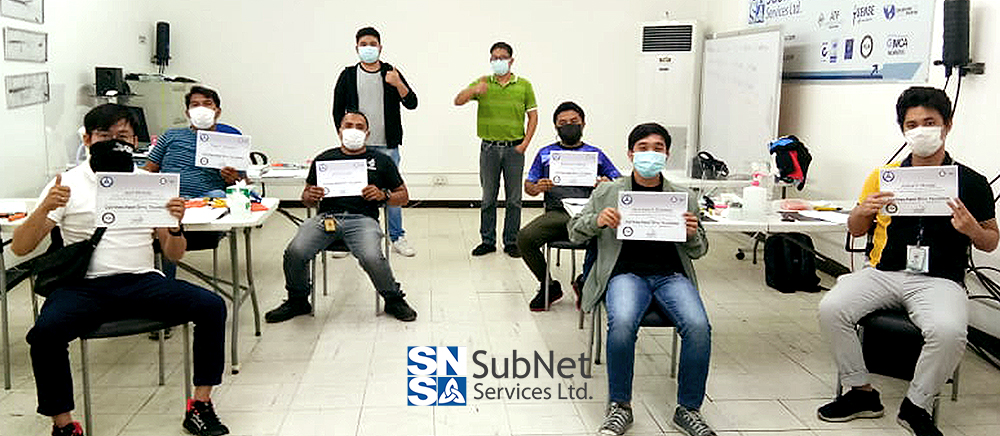Fiber in Wireless Communication: Distributed Antenna System
It is hard to imagine life without smartphone or other wireless communication devices. Wireless technology has become an important part of most people’s lives around the world. Wireless communication has a big impact to the world in many important ways: (1) improving communication, (2) increasing efficiency, and (3) introducing new ways of performing different tasks.
The challenges in wireless communication are fulfilling new wireless applications, connection demands, and rapid technology changes. One of the wireless solutions to address the need for connection is the Distributed Antenna System or DAS.
Almost 70% of cellular calls and 80% of data traffic originated inside the building and providing adequate coverage is a necessity. DAS can ensure that you are connected anywhere, whether indoor or outdoor, to utilize all the functions of your smartphone and other wireless devices.
Components of DAS
DAS is a series of antennas connected within a building that sends and receives cellular signals on a carrier’s licensed frequencies; thereby, improving voice and data connectivity for end users. It has two main components:
Signal sources – one of the single most important factors in determining both the coverage and capacity of a DAS system. No matter how well the distribution system performs, a DAS is always limited by the performance of the signal supplying the network.
- Off-Air – is sometimes called a repeater. To extend the coverage of the signal inside the building, a DAS uses an off-air signal by utilizing a donor antenna on the roof to receive and transmit signals from a cell carrier. Off-air signals are the most common signal sources for a DAS. It does not add extra capacity to the carrier’s network and often the lowest cost.
- Base Transceiver Station (BTS) – refers to the technology of used inside cellphone towers to generate a cellular signal. The connection between the cell carrier’s BTS and the core network typically require a dedicated fiber connection that is usually installed by the carrier themselves. It takes longer to deploy and more expensive.
- Small Cells – are the latest technology used by the network carrier to provide cellular service inside the building. They secure a connection back to the carrier’s network over a normal internet connection and generate a high quality wireless signal.
Distribution Systems – amplify, distribute, and rebroadcast the signal within the building.
The four main types of DAS signal distribution are the following:
- Active – An active DAS converts the analog radio frequency transmissions from the signal source to a digital signal for distribution. A master unit performs this analog-to- digital conversion. The master unit may digitize the signal from a single carrier or multiple carriers. Once converted, the DAS transmits the digital signal over fiber optic or Ethernet cables to remote radio units (RRUs) that convert the signal back to an analog signal. Unlike passive or hybrid systems, active systems do not use coaxial cable to distribute signal. Fiber optic or Ethernet cable runs straight to the antenna unit and the conversion back to analog RF is done by circuitry inside the antenna.
- Passive – A passive DAS uses passive RF components such as coaxial cable, splitters, taps and couplers to distribute signal inside a building. The farther the antenna is from the signal source and any amplifiers, the more attenuation (loss) there will be in the power broadcast from that antenna. Designing a passive DAS correctly requires calculating precise link budgets to make sure the outputted power at each antenna is equal.
- Hybrid – A hybrid DAS combines characteristics of passive and active systems. The RRUs are separate from the antennas, allowing the system to use both fiber optic cable and coaxial cable to distribute signal throughout a building. Because this configuration requires fewer RRUs, a hybrid DAS normally costs less than an active DAS. A typical hybrid DAS configuration includes an RRU on each floor that converts from the digital signal to analog RF. The analog RF signal is then connected to multiple antennas on that floor with coaxial cable.
- Digital – The very latest development in DAS technology is the Common Public Radio Interface (CPRI) specification, which allows a base band unit (BBU) to communicate directly with the DAS master unit and through to the remote units without any conversion to an analog RF interface.
The performance of a DAS depends on the type of technology it uses. The two main performance reasons that DAS solution is deployed are to provide coverage and capacity. Identifying one of these needs is one of the primary requirements of deploying the right DAS technology.
Deploying DAS Technology
The deployment of DAS includes a network of antennas spaced apart, while having a common source to give users the right coverage no matter their application needs. Antennas serve as repeaters to a building wireless and can connect with a wireless carrier’s base station. DAS needs connection from the licensed carrier’s wireless to operate on a RF spectrum. However, there are advantages and disadvantages in deploying DAS.
Pros of Deploying DAS
- Greater cellular capacity – it can handle multiple bands from multiple operators at the same time
- Flexibility – more scalable for large locations that requires high bandwidth
- Broader range of mobile devices with their own cellular plan central can receive a strong Internet connections to the cultural capability
Cons of Deploying DAS
- Cost – significantly more expensive than other network because of: (a) the need to use fiber optic cables to each radio head to a central hub, (b) the development of central hub itself, (3) the placement of the cellular base station, and (4) the DAS equipment.
- Backhaul – the need to use fiber optic cables to each radio head to a hub. Cable management issues, if not conducted properly, can cause serious harm to the structural capability.
- Upgradeability – require the replacements of base station and modifications being made to the radio heads themselves making more difficult.
Importance of DAS
As a fiber optics instructor, DAS is a part of fiber optics courses I teach, as it uses the fiber optics as transmission medium to deliver its services. In my Certified Fiber Optic Technician (CFOT) classes, individuals will know the applications of fiber optics in wireless communications like DAS.
Currently, most of us depend on wireless communications, therefore sharing knowledge on DAS technology gives some ideas and awareness to people on how our current technologies make our lives easier and comfortable. As the telecommunications industry goes more wireless, mobility and high speed connections are our utmost concern to do our works with ease. I personally experienced the limited coverage form cellular networks that also limits my capabilities to effectively do my job as most of the communications need connections to the internet like emails, file sharing, do research, and a lot more. With DAS, it extends the coverage of connections with less power usage in an area.
In conclusion, DAS technology developments will play a significant role to expand network connectivity in the near future and will continue to provide scalable network efficiency for multiple bands and carriers.
Sources:
– Radio-Electronics.Com. “Distributed Antenna System DAS”. radio-electronics.com. https://www.radio-electronics.com/info/antennas/das-distributed-antenna-systems/basics-tutorial.php (accessed August 29, 2018)
– RepeaterStore. “Cellular Distributed Antenna Systems (DAS): The Definitive Guide”. repeaterstore.com. https://www.repeaterstore.com/pages/das-distributed-antenna-systems (accessed August 29, 2018)
– The Market Minute Blog. “What Is a DAS System?”. landmarkdividend.com. https://www.landmarkdividend.com/what-is-a-das-system/ (accessed August 29, 2018)



